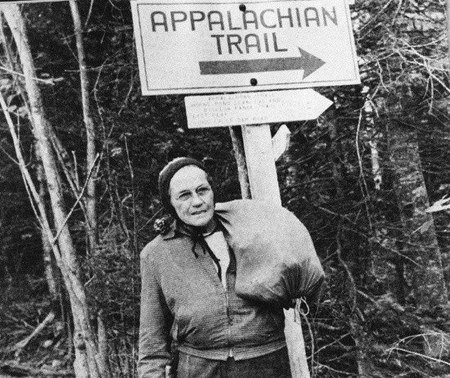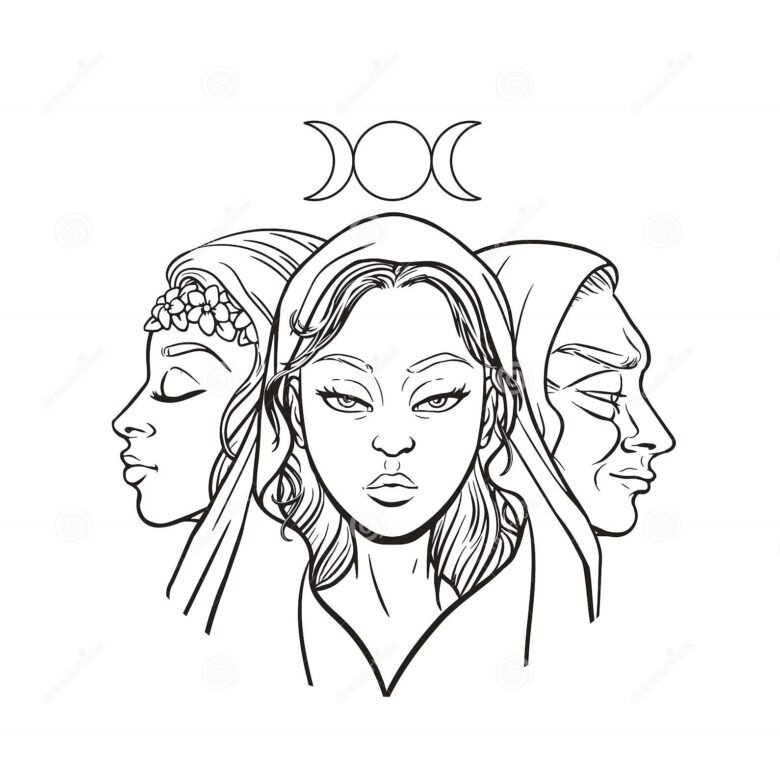
While researching for my MA folklore dissertation on female folkloric creatures, and simultaneously diving into the study material for my specialised coaching major on female life transitions, I’ve come across a lot lately that’s made me examine and question the traditional division of women’s lives into the three phases of maiden, mother and crone.
Sara Stang, in her doctoral thesis about abject female monstrosity in roleplaying games, says the following:
While this triad has been reclaimed by some Neopagan and Wiccan practitioners as the three faces of the Goddess, it is inherently problematic in that it forces women into deterministic categories that presume a cis-heteronormative female development understood in relation to fertility and heterosexual male desire… These categories imply that there is nothing else in a woman’s life besides being virginal, maternal, and old.
Sara Stang
I’ve always loved the imagery of the Triple Goddess, but this is a strong statement and it made me do some questioning of my own. Is this categorisation really still working for us in 2023?
Maiden
The traditional three categories effectively divide a woman’s life cycle into pre menarche, the fertile years and then menopause/post menopause. But in an age where girls start menstruating at an average age of 12 years old, sometimes as early as 8 years old – will we start calling her mother at this age?
I’m a huge believer in marking and ritualising life transitions, I think the first blood/menarche ceremony is really important for young girls to celebrate their changing bodies rather than be taught to be ashamed of them. It’s a real opportunity to mark their change of status in an empowering way, and for them to be welcomed and advised by older women. But perhaps we don’t need to be expecting them to take on the full weight of being considered an adult woman at this stage?
I’m also troubled by the strong association of maiden with ‘virgin’ – a concept that I feel is an unhelpful social construct. It defines a woman very specifically by her relationship with men, and not on her own terms. It’s also very heteronormative, as Stang points out.
Mother
Not every woman wants to, or is able to, become a mother, and there’s arguably already too much pressure and expectation pushed upon on women to go down this route. What about all the other ambitions she may have during her ‘fertile’ years? What about those women who have had hysterectomies, or who are infertile, or who simply don’t want children?
For those women who do have children, is being a mother all that she is? In the UK 73% of mothers with children under 18 are in full time employment – most women during this time have other aspects to their lives, even if being a mother is one of them.
Crone
The average age for the beginning of perimenopause in the UK is 45 – 55 years old, with the average age to reach menopause 51 years old. Life expectancy has increased since our ancestor’s time – Is a 50 year old woman now to be considered a crone, when she may have nearly half of her life ahead of her?
Julia Roberts at 54 years old… Crone?

An alternative cycle
Having said all this, I still love the concept of there being seasons in a woman’s life. We are cyclical creatures, we cycle with the moon phases, our lives do have a seasonal rhythm. What is important to us changes as we grow and mature.
But there are four phases to the moon cycle, four seasons in the year, and so I have begun to work with the idea of four seasons in a woman’s life – and in this I have been strongly influenced by the teachings of both Katinka Soetans and Layla Martin.
Pathfinder
Roughly corresponding to the period from menarche up to age 25, this corresponds to Springtime. The time for exploration, discovery, finding out who she is. It’s a time of growth, rising energy, starting to move outward into the world for the first time.
What if at the first blood ritual, rather than ‘now you’re a woman’ we were able to say, ‘now you are a pathfinder, a seeker… we will support you as you start to find out who you are?’.
Creatrix
From around 25 – 45 years old is Summertime. This is the time for full expression in the world, blooming into maturity, building a career, perhaps birthing projects, creative endeavours, perhaps birthing and caring for children. This is a powerful phase of fulfilling potential in all areas of a woman’s life, of being involved in the community and outside projects.
Maga/Healer
The word Maga is the feminine form of Magus/magician, some call this stage the Enchantress. Roughly around 45 is the onset of perimenopause for most women, this is Autumn. At this time there is a huge and powerful portal of transformation, a woman’s energy begins to be directed partly inwards and not solely out into the world. Just like in the seasonal cycle it’s a time of gratitude, and often a time of plenty as she reaps the rewards of all her efforts career-wise. It’s also a time to take stock, to notice what serves her and what can be let go. If she has children they may be leaving home, and there is a new freedom, and often a reconsideration of what she wants to take forward into this new phase of life.
Wise Woman
Around 65+ we make the transition to Wintertime. This is the transition to respected elder of the community, carrier of wisdom, lore keeper. It’s a time of more inward turning energy, perhaps more contemplative, perhaps more spiritual. And it’s also the case that many women at this age, freed from previous responsibilities, cycle round again and experience what can be a second Spring, once again becoming the pathfinder as they explore new interests as they find themselves with more free time after retirement.
Grandma Gatewood, hiking the Appalachian Trail at the age of 67

I love this cycle as it acknowledges the phases of growth, expansion and contraction, honouring the phases of a woman’s life as a subject, an active participant and creator of her path, just as it should be. It doesn’t define her by her fertility or by her relationship to men, and it gives room for individual varied life choices. I would love to see more and more women honouring these transitions with ritual, bringing consciousness to the passage through each beautiful portal of transformation.
Reference:


